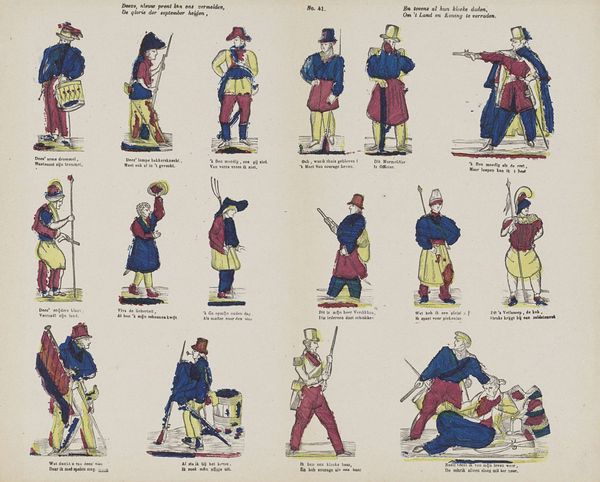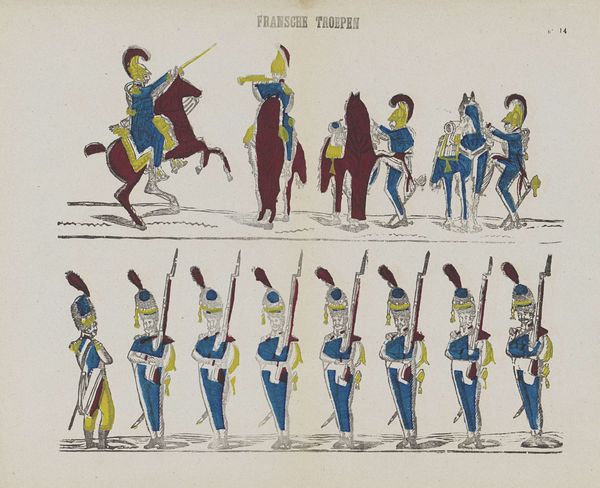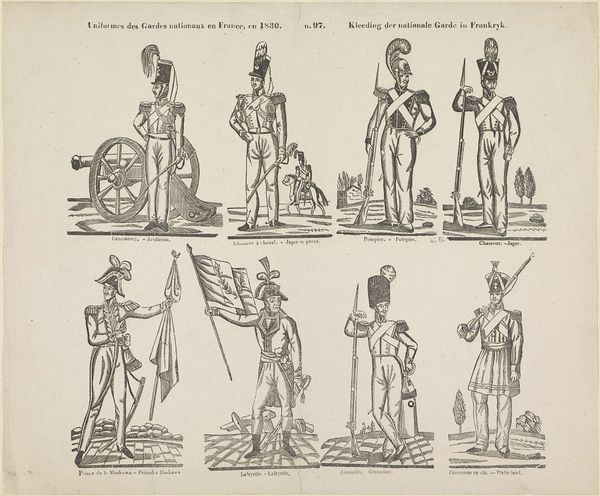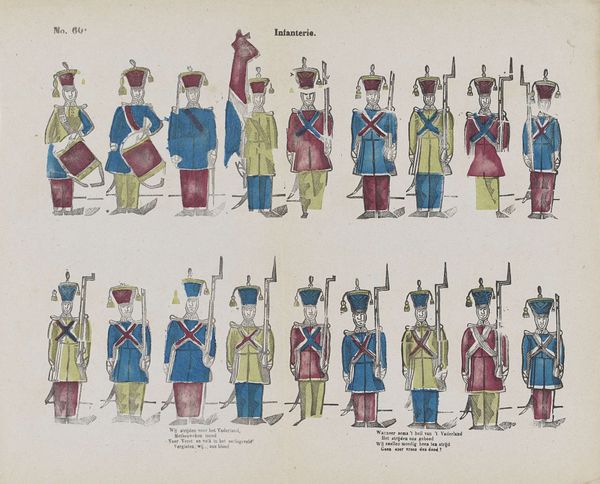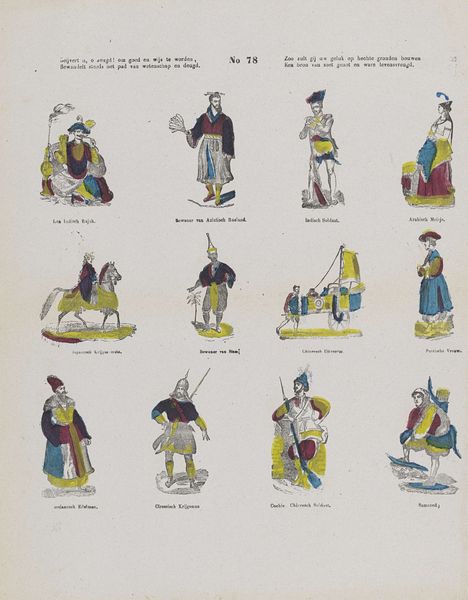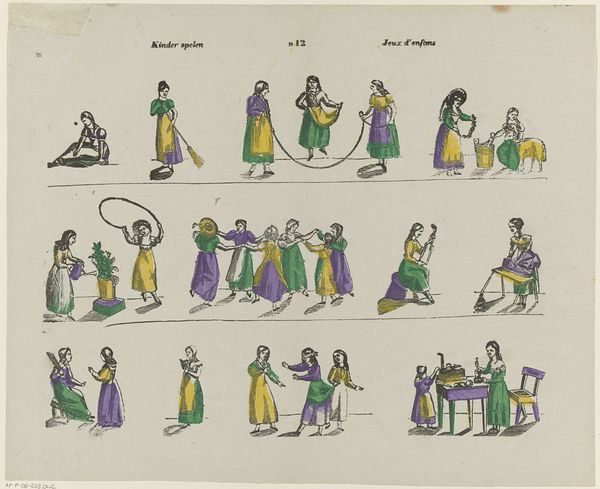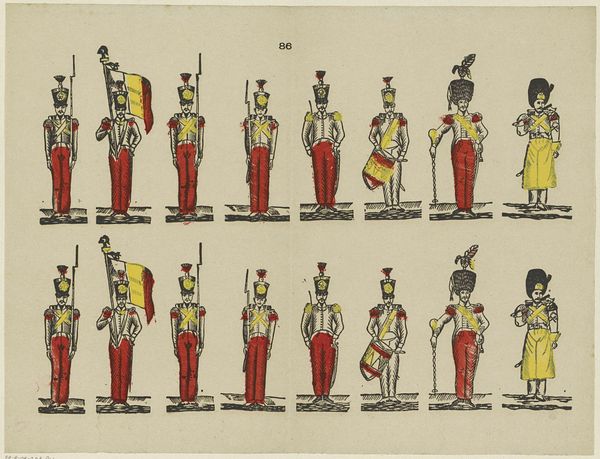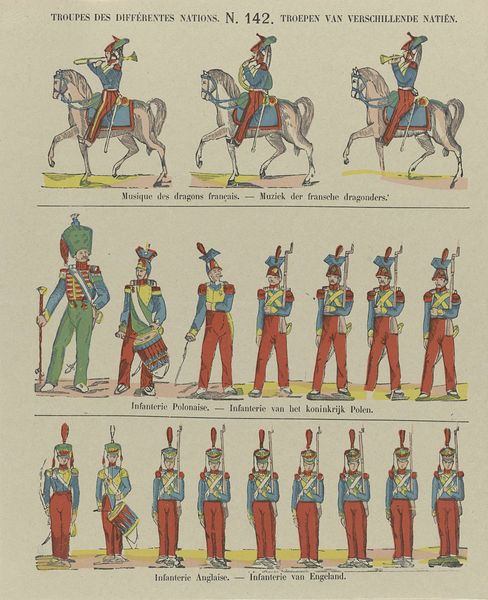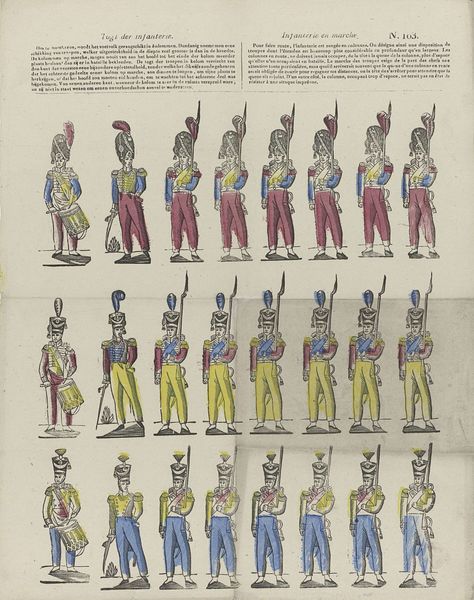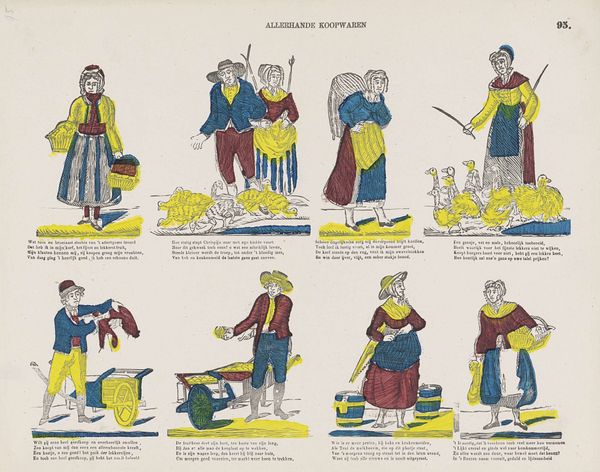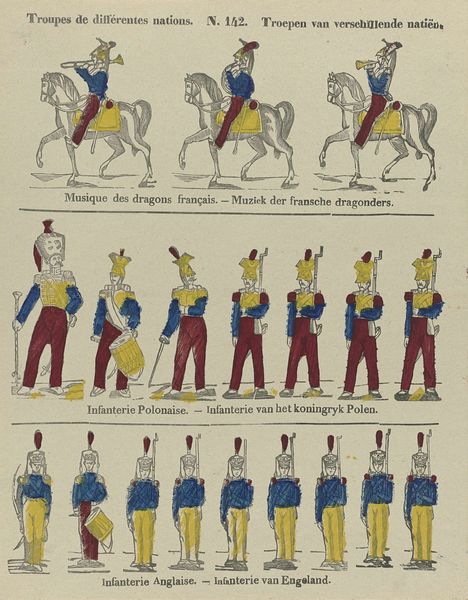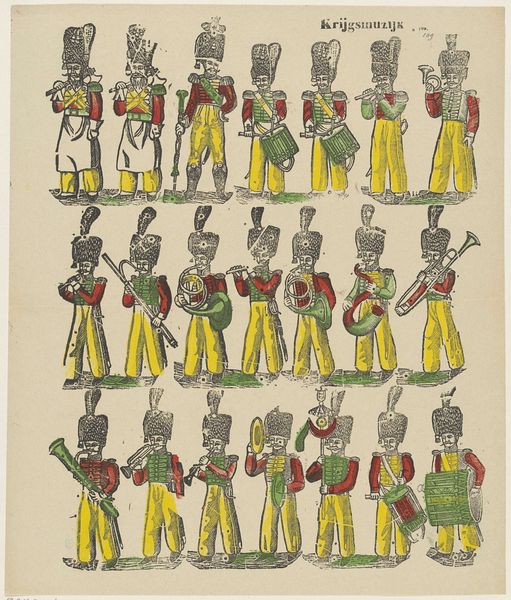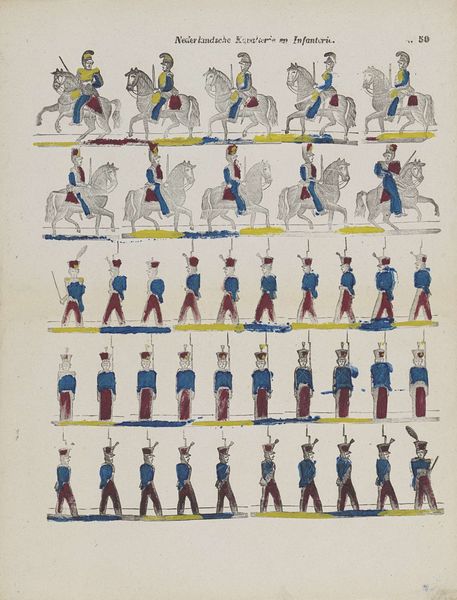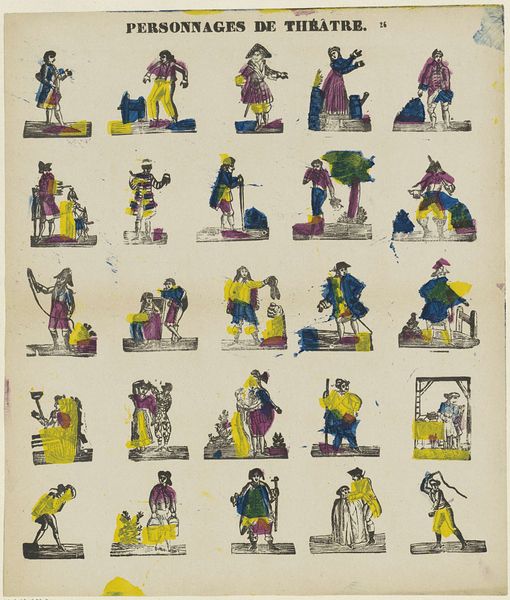
Uniformes de gardes nationaux en France / Kleeding der nationale garde in Frankryk 1800 - 1833
0:00
0:00
philippusjacobusbrepols
Rijksmuseum
drawing, lithograph, print
#
portrait
#
drawing
#
neoclacissism
#
lithograph
# print
#
figuration
#
historical fashion
Dimensions: height 343 mm, width 412 mm
Copyright: Rijks Museum: Open Domain
Editor: This lithograph from the Rijksmuseum, "Uniformes de gardes nationaux en France," created sometime between 1800 and 1833 by Philippus Jacobus Brepols, depicts various uniforms. There's something almost quaint about these figures standing so stiffly in their colorful outfits. How do you read this piece, knowing it was made during a time of significant political upheaval in France? Curator: I see these uniforms not just as fashion plates but as visual representations of power and the burgeoning sense of national identity in post-revolutionary France. They’re meant to project authority, but there's an element of performativity here. What stories do you think these uniforms are meant to tell? Editor: Well, obviously, it screams order and control, but there is also this fascinating sense of trying to solidify the identity of a nation after such a huge revolution. Curator: Precisely! These aren't just clothes; they're ideological costumes. Look at the specific details – the colours, the cut, the ornamentation. Consider what each of those elements might communicate about the wearer's role in the newly formed social order. How does this kind of imagery function to create or reinforce ideas about citizenship? Editor: So, the uniforms are more than just uniforms; they're statements about who belongs and what they represent within France's reshaping of national identity? Curator: Exactly! This print allows us to analyze the ways in which visual culture was being used to construct and disseminate particular notions of nationhood and civic duty during a pivotal moment in European history. I find it powerful that these prints helped shape and solidify societal expectations and the desired norms of gender and power. Editor: That adds so many layers of interpretation to what initially seemed like a simple depiction of uniforms. It's incredible how much historical and political context can be embedded within something like clothing! Curator: Indeed, and by questioning what these symbols meant at the time, we get a better understanding of how visual rhetoric functions in society, both then and now.
Comments
No comments
Be the first to comment and join the conversation on the ultimate creative platform.
